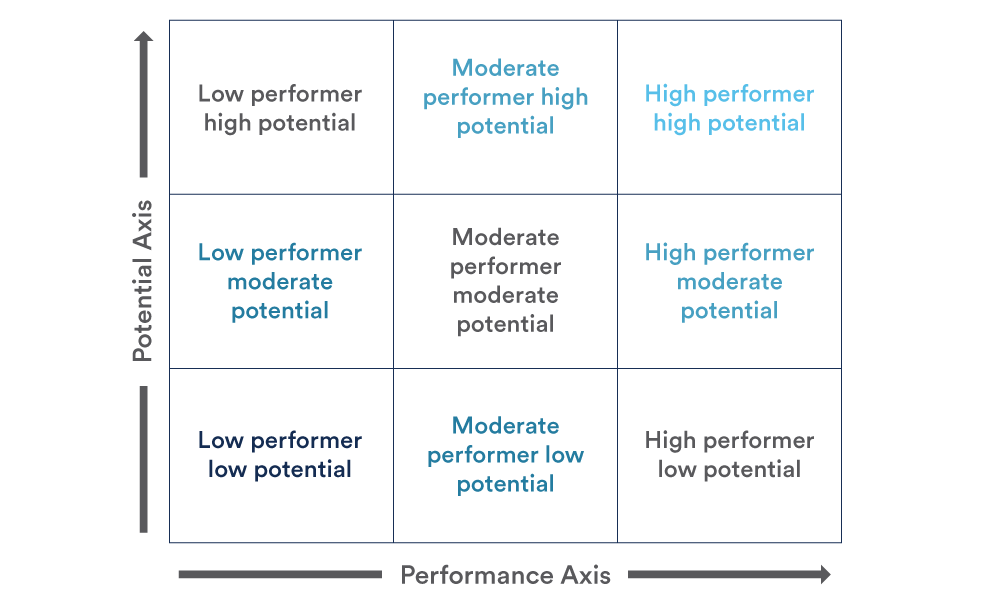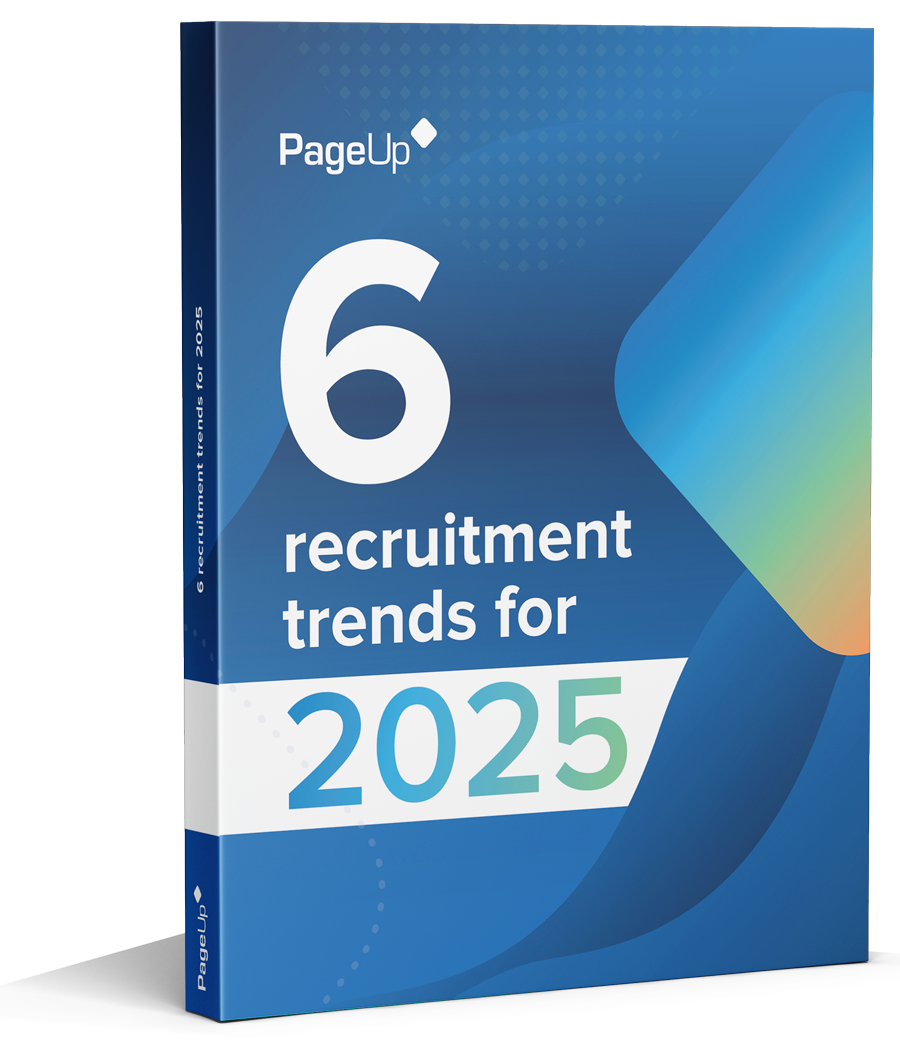HR practitioners and leaders understand how tricky it can be to define a person’s performance. How can you rate an employee’s potential to grow, or recogniserecognize the leadership qualities that make them suited to succession roles? As an organisationorganization, how can you set a benchmark that lets you compare all employees objectively and with a degree of fairness?
That’s where succession planning tools like the 9-box grid can prove useful for HR and people leaders.
The 9-box grid is a popular tool for talent and performance management that helps organisationsorganizations create efficient succession plans. The model is simple, visual and effective in helping senior leaders by:
- Developing people for senior or complex leadership roles
- Identifying employees who need further development
- Pinpointing gaps where external recruitment is needed
- Classifying the critical talent and roles within a workforce
“A 9-box succession plan gives you the ability to visualisevisualize your organisationorganization’s talent and bench strength in one click. It not only facilitates career discussions, but allows for a greater focus on development efforts,” says Marion Robinson, Chief Growth Officer at PageUp.
Let’s explore the 9-box in more detail:

How the 9-box grid works
Imagine you have a person who is both a high performer and has high potential. They will be ranked in the top right hand corner. Moving to the middle of the grid is reserved for moderate performers with moderate potential. Conversely, the bottom of the grid represents employees who demonstrate low performance and low potential.
In most cases, a set of leadership qualities are rated alongside an employee’s performance and potential, to ensure that employees are measured consistently and fairly, rather than contrasting the competencies for the different roles many employees may be in.
Using the tool to collaborate
The 9-box grid is best used as a collaborative exercise where people leaders and leadership teams come together to position each team member on the grid. Once completed, the 9-box grid helps you plan the progression of each team member to map out your organisationorganization’s future leadership positions.
Not all organisationsorganizations restrict themselves to 9 boxes. Some use a 4 box grid, while others opt for 25 boxes. It depends how finely organisationsorganizations choose to segment their employee data, and how many specific actions, programs or funding they have to allocate for employees in each box. Here are five ways to make the 9-box succession grid successfully work for you.
Five ways to use the 9-box succession grid:
1. Prepare early

As with everything related to performance, it’s a good idea to start planning early. This involves preparing your leadership team for the 9-box planning session. That way, you can ensure it’s not going to waste anyone’s valuable time.
How do you prepare your management team? Talk them through the process in advance, give them plenty of time to understand what’s involved and let them gather their thoughts before the session. Some organisationsorganizations find it beneficial to engage a facilitator who can help coordinate everyone and ensure they’re prepared prior to the session.
2. Set criteria

While it might be easy to pick the ‘good’ and ‘not so good’ performers, the leadership team may struggle to place people in the other categories. That’s why it’s important to set the criteria for each box and agree on the standards employees should meet.
‘Potential’ is particularly tough to grade, since it’s predicting future performance. It’s best to provide a definition so everyone is on the same page. In short, it refers to the ‘promotability’ of an employee to a leadership role.
It’s also a good idea to have concrete criteria to grade your employees on. This will differ between organisationsorganizations but could take the form of certain attributes or assessments that help you evaluate people.
3. Ask questions

It’s important for the leadership team to ask questions and remain objective throughout the 9-box rating process. The ratings must also be unbiased, and objective to ensure consistent, meaningful outcomes. Here’s where HR teams can play a role by setting guidelines for this process.
4. Analyse results

Once your leadership team has calibrated and positioned people in the 9-box grid, it’s time to evaluate the results. It doesn’t hurt to take a step back and do another sweep to ensure you’ve placed people according to their performance and potential. This is the time to have healthy debates about placement. This gives the leadership team the chance to advocate for their people.
5. Schedule catch-ups

Leadership teams shouldn’t be limited to have one meeting per year. See it as an opportunity to schedule regular catch ups with the leadership team to discuss any changes – especially if your organisationorganization has experienced significant changes in staffing levels.
Now that we’ve set the foundations for successfully using the 9-box tool, here are 15 reasons why it works:
15 reasons to do succession planning
There are a number of advantages to using the PageUp Succession Planning module. It comes with an intuitive, fully interactive 9-box tool that allows teams to rate employees, attach comments to performance reviews and assign learning tasks to help people stay on top of their goals.
1. Establishes tomorrow’s leaders

Using the 9-box grid helps you identify employees with high potential so that you can develop them into future leaders. It’s important to make people feel like you’re invested in their development: as this also plays a crucial part in keeping them engaged at work.
The 9-box grid helps you determine which employees are ripe for promotion – typically those who are high performers and with high potential. Once you’ve identified these top performers, keep them engaged with challenges, rewards and recognition.
2. Identifies role suitability

The 9-box grid can help you identify employees who are well-suited to their current responsibilities, those who may perform better in a different role, and those who may be unsuited to your organisationorganization altogether.
For example, high performers who rate low-to-medium in potential are often perfectly suited to their current role and fulfilling their duties capably. If that’s the case, you may want to ensure they’re rewarded appropriately so you can retain them in their current roles.
The 9-box grid also allows you to identify team members whose roles and abilities are misaligned. For example, a high potential/low performance ranking could indicate that someone is not well suited to their role. This opens the floor to discuss other opportunities, starting with identifying what they are interested in and what roles might be of interest within the organisationorganization.
Low potential and low performance could that mean people need close Performance management monitoring, and may be an unsuitable fit for your organisationorganization.
3. Plans for success

It’s not always easy to keep track of benchmarks and compare every employee to the same standard. It can also be hard to have all the information you need to properly assess employees.
The 9-box grid gives you a framework to assess each employee to the same standard, while also encouraging open discussion among your management team. This is a great way to plan effective performance reviews.
4. Sets goals

Going into a performance review with a clear plan will allow your leadership team to set clear and consistent goals for your employees’ performance and potential.
5. Tracks performance

Using the 9-box grid allows you to spot trends in your employees’ performance (both positive and negative) – giving you the chance to make changes and adjust your management approach. That way, all employees have the best chance of improving their performance to reach their full potential.
6. Encourages communication

Unlocking the potential of the 9-box grid is important. If you’re meeting for a short period and just jotting down names, you won’t take advantage of the tool’s full potential.
You will find it much more beneficial if you allow plenty of time for discussion about the top performers, potential leaders and talent gaps in your organisationorganization. The 9-box grid is a fantastic facilitator for this. It opens up communication and allows you to find common ground on which to judge the performance of employees and plot their potential.
7. Enables collaboration

Nine-box succession planning also allows your management team to develop their teamwork and leadership skills. Everyone gets a chance to say their piece and they can each lead meaningful discussion. It’s a great way to bring the management team together, and gives everyone the chance to collaborate.
8. Supports people leaders

The 9-box tool is designed to bring senior people leaders together to ultimately build a stronger organisationorganization. As a collaborative exercise, the team is responsible for making decisions, listening to each other and remaining supportive throughout the decision-making process. This is particularly helpful if there are difficult conversations to communicate with people – senior leaders can lean on their peers for support and positive encouragement.
9. Promotes transparency

The 9-box tool places everyone in a grid, which gives HR leaders complete clarity of where each employee is positioned against their peers within the organisationorganization. “Having transparency across not only a business unit but the whole organisationorganization enables Human Capital Risk Management,” says Marion Robinson, Chief Growth Officer at PageUp.
10. Empowers development

If people understand where they rank on the grid, it gives them the opportunity to take control of their development. This might prompt them to adopt different methods for learning and development (L&D) like mobile, social and microlearning.
11. Facilitates ownership

Identifying an employee where they’re placed on the grid gives them visibility and ownership of their position in the organisationorganization. From there, an employee can engage in performance conversations with their manager and agree on future goals, challenges and development opportunities. It helps to set high-performing employees weekly, monthly or yearly challenges to keep them engaged and focused for the journey ahead.
12. Saves money

Eliminating external courses and program costs makes great sense for organisationsorganizations looking to curb their spending. External performance assessment courses usually come with a high price-tag, which goes against organisationsorganizations that are looking to save. There are obvious cost saving benefits in using a free 9-box grid. However, organisationsorganizations looking to invest in a long term solution can purchase a specialisedspecialized platform like PageUp Succession – to help identify its full bench strength, map out roles and make career progression plans for people.
13. Motivates people

The 9-box grid helps people visualisevisualize and understand where they sit in the organisationorganization, which can be a source of motivation, particularly if a team member has the ambition and potential to move into a succession role within the organisationorganization.
14. Retains talent

It’s a well-known fact that people leave companies that don’t provide them with good development opportunities. If top performers know there is the potential to move into succession roles, they’re more likely to stay around.
15. Identifies risks

Is your organisationorganization fostering a culture of high performers who have been in a role for too long? The 9-box succession tool helps identify high-performers who are likely to jump ship if another opportunity comes along. “Identifying the right skills in the right place at the right time is the lever for growth,” says Marion Robinson, Chief Growth Officer at PageUp.
It’s also important to analyse how other people are tracking in the rest of your organisationorganization. Are they remaining stagnant in the same position on the grid year after year, and holding your organisationorganization back? Having visibility of low and average performance can help identify learning and development gaps. Senior management can use this information to implement strategies to keep people engaged and motivated in their roles – especially if the majority of people are clustered towards the middle and the bottom of the 9-box grid.
Fresh insights for HR
Stay up to date with HR trends, tips and more when you sign up for our industry newsletter





